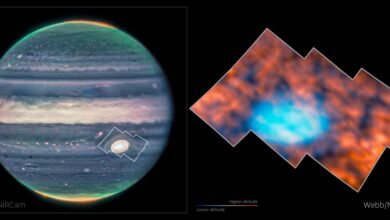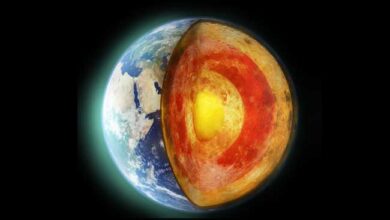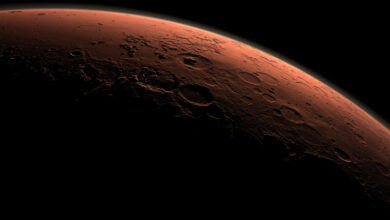New Images from Mars Express Show Enormous Scar on Red Planet’s Surface

[ad_1]
Newly released images from the European Space Agency’s (ESA) Mars Express orbiter have captured a breathtaking view of a massive “scar” on Mars’ surface, known as Aganippe Fossa.
This remarkable geological feature is a graben, a ditch-like groove with steep walls, stretching about 375 miles (600 kilometers) in length—longer than the Grand Canyon.
These images offer unprecedented detail, shedding light on the complex geological history of the Red Planet and providing fresh insights into its dynamic past.
Detailed Observations from Mars Express
The Mars Express orbiter, which has been circling the Red Planet since 2003, captured these stunning images on December 13, 2023. The newly released photos reveal intricate details of Aganippe Fossa and its surrounding landscape.

On the left side of the scar, the ground is characterized by uneven terrain with numerous mounds, grooves, and ridges. In contrast, the right side appears smoother and displays distinctive “zebra-like” rocky stripes.
ESA representatives explained that this stark difference is likely due to historical wind erosion that affected one side more significantly than the other, stating, “This stark difference was likely caused by historic wind erosion to the right of the graben, which wore down the planet’s surface in that area. However, it is unclear why the rest of the surrounding landscape was unaffected.”
Origins and Geological Significance
Aganippe Fossa is situated near the base of Arsia Mons, one of the largest volcanoes on Mars, located on the Tharsis plateau. This region is geologically rich, featuring two other major volcanoes—Pavonis Mons and Ascraeus Mons—and the tallest peak in the solar system, Olympus Mons.

The formation of Aganippe Fossa is believed to be the result of a large plume of magma that pooled beneath Arsia Mons, causing the Martian crust to stretch and crack. ESA officials elaborated on this, noting, “We’re still unsure of how and when Aganippe Fossa came to be, but it seems likely that it was formed as magma rising underneath the colossal mass of the Tharsis volcanoes caused Mars’s crust to stretch and crack.”
This geological activity underscores the dynamic and volcanic nature of Mars’ history, revealing the powerful forces that have shaped the planet’s surface over millions of years.
Comparisons to Other Martian Features
While Aganippe Fossa is longer than the Grand Canyon, it is still significantly shorter than Mars’ Valles Marineris, which spans over 2,500 miles (4,000 kilometers) along the planet’s equator, making it the largest canyon in the solar system.
Similar grabens exist in Noctis Labyrinthus, a massive canyon about the size of Italy, situated between Tharsis and Valles Marineris. These comparisons highlight the diverse and dramatic landscapes of Mars, illustrating the planet’s rich geological complexity.
The ESA explained, “Aganippe Fossa is one of many classical albedo features on Mars, which refers to the light and dark features that can be seen on the planet through even an Earth-based telescope.”
Ongoing Scientific Exploration
The images captured by Mars Express not only highlight the dramatic features of Aganippe Fossa but also contribute to our understanding of Martian geology. The region around Tharsis, including the volcanic aureole of Arsia Mons, continues to intrigue scientists.
This area has also been the focus of recent discoveries, such as a hidden giant volcano near Noctis Labyrinthus and over 150,000 tons of frozen water across the peaks of the three Tharsis volcanoes. The ESA noted, “The mission has been immensely productive over its lifetime, creating a far fuller and more accurate understanding of our planetary neighbor than ever before.”
These new images of Aganippe Fossa provide a striking reminder of Mars’ dynamic past and its ongoing geological activity. They also highlight the incredible capabilities of modern space exploration tools like the Mars Express orbiter, which continue to deepen our understanding of the Red Planet.
As Mars Express and other missions continue to explore the Red Planet, they promise to reveal even more about its complex and fascinating geological history, offering new perspectives on the processes that have shaped our neighboring world.
[ad_2]
Source link





